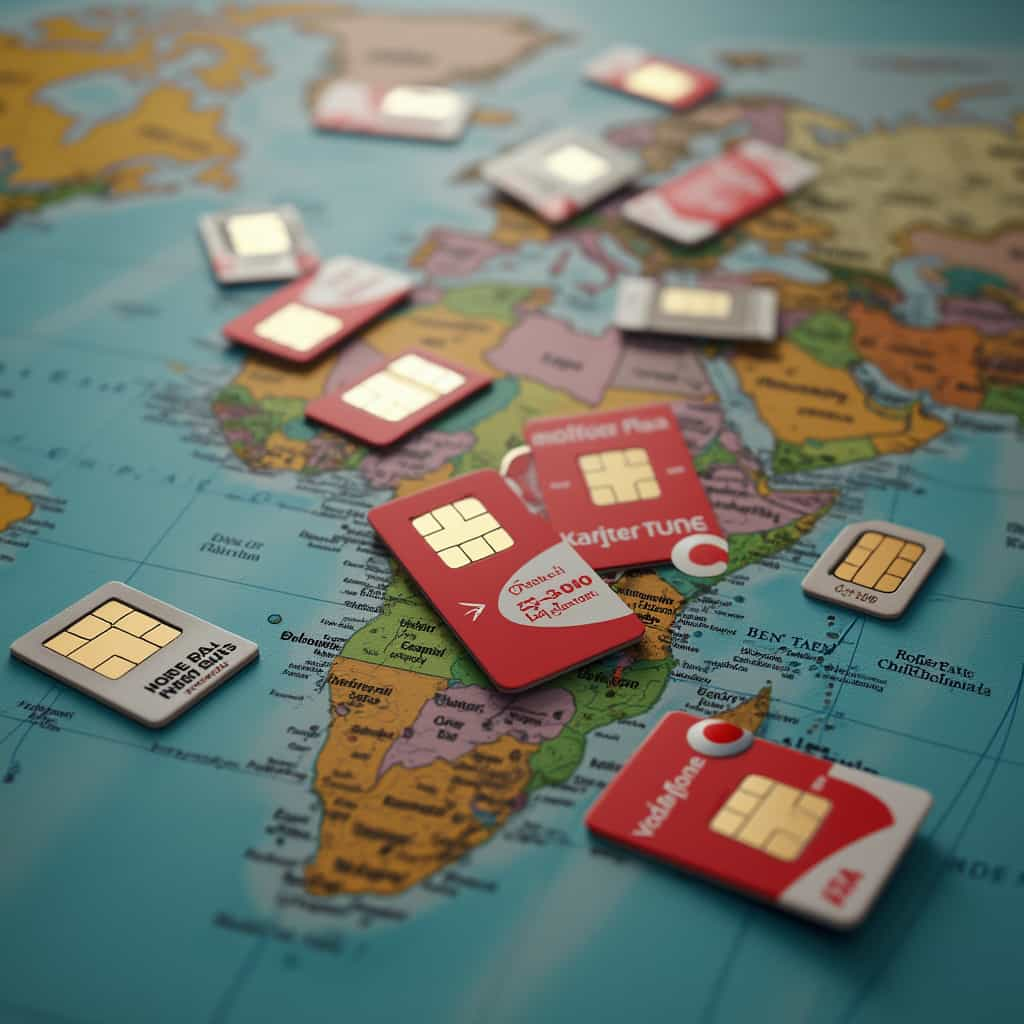The world of SIM cards is as diverse as it is essential, providing critical access to mobile networks globally. These small, yet vital, chips grant us entry to a digital world, where connectivity is key. Whether it’s a SIM-only plan, a prepaid SIM card, or a specific provider like Vodafone, understanding the myriad options available can feel overwhelming.
SIM cards, or Subscriber Identity Modules, first appeared in the early 1990s, revolutionizing mobile telecommunications by allowing users to change devices without altering their number. Since then, the SIM card market has evolved dramatically, offering a variety of options that cater to different needs and preferences.
In particular, SIM-only plans are popular due to their flexibility and cost-effectiveness. Unlike traditional mobile contracts, where a handset and a network service are bundled, SIM-only plans provide just the network service. This means users have the freedom to choose their device and often face lower monthly costs since they aren’t paying for a phone.
An illustrative example of SIM-only plan benefits can be seen with Vodafone’s offerings. Known for their extensive coverage and competitive prices, Vodafone provides a range of SIM-only deals that cater to various user needs—from budget-friendly plans to those offering unlimited data, perfect for data-heavy users.
Comparatively, prepaid SIM cards offer an enticing alternative, especially for travellers and those wary of long-term contracts. With a prepaid SIM, you pay for what you use in advance, avoiding the shock of unexpected bills. Many users find this control over their expenditure particularly appealing, especially in regions with volatile mobile service fees.
In the quest for the best SIM card, users often consider factors such as cost, data allowances, and network coverage. For instance, Vodafone’s prepaid SIMs offer robust packages that match any budget, providing an ideal solution for tourists looking for reliable international roaming options.
Choosing the right SIM card often involves weighing cost against features. Across different geographies, the fixed costs associated with SIM cards can vary significantly. In Europe, for example, competitive markets mean users can find low-cost SIM cards with ample data allowances, whereas in North America, costs can be higher due to limited competition.
Globally, Asian countries like India and China offer some of the most affordable mobile plans, driven by a high density of users and fierce market competition. Indian providers like Airtel and Jio frequently top lists for budget-friendly options with generous data plans, while European providers may offer more balanced plans combining data with other benefits such as international calling.
Beyond the price, the ‘best’ SIM card is also determined by the user’s individual needs. A student or a budget-conscious user may prioritize cost, while a traveling businessperson might value a plan’s roaming capabilities and international reach. For instance, Vodafone’s international plans are praised for their seamless global coverage and ease of use across borders.
In summary, when selecting a SIM card, users should focus on their specific needs and the respective offerings of different providers. By comparing available plans, examining costs, and understanding regional differences in pricing, consumers can ensure they find the ideal SIM solution, whether that be through a Vodafone SIM, a prepaid option, or a tailored SIM-only plan.
You may also like
ADSL-Angebote: Kosten und Vorteile verschiedener Anbieter
Dieser umfassende Artikel befasst sich mit den vielfältigen Angeboten auf dem ADSL-Breitbandmarkt. Er bietet einen detaillierten Vergleich der Tarife, Kosten und Vorteile verschiedener Anbieter und zeigt, wie Verbraucher die besten Angebote für den Heim-Internetzugang finden. Besonderes Augenmerk wird auf geografische Preisunterschiede und die mit ADSL verbundenen Fixkosten gelegt.
Kreditkarten: Die besten Optionen für Privatpersonen und Unternehmen
Kreditkarten spielen eine zentrale Rolle im Finanzökosystem und bieten vielfältige Vorteile, bergen aber auch potenzielle Risiken. Dieser Artikel befasst sich mit verschiedenen Kreditkartenangeboten, ihren Kosten, Vorteilen und den besten Optionen für Privatpersonen und Unternehmen. Er beleuchtet außerdem geografische Risikofaktoren und Sicherheitsbedenken.
Banking services: Costs and benefits of online accounts
The banking industry offers a plethora of options, from traditional institutions to modern digital platforms. This article delves into the array of banking services available, focusing on the costs and benefits of online accounts, loans, interest rates, and more. It also examines geographical differences in banking availability and risks.
ADSL Offers: Costs and the benefits of various providers
This comprehensive article delves into the myriad offerings in the ADSL broadband service market. It provides a detailed comparison of plans, costs, and the benefits of various providers, focusing on how consumers can find the best deals for home internet. Special attention is given to geographical variances in pricing and the fixed costs associated with ADSL.
Credit Cards: Best options available for individuals and businesses
Credit cards are pivotal in the financial ecosystem, offering diverse advantages but also posing potential risks. This article delves into various credit card proposals, their costs, benefits, and the best options available for individuals and businesses. It also highlights geographical risk factors and safety concerns.
